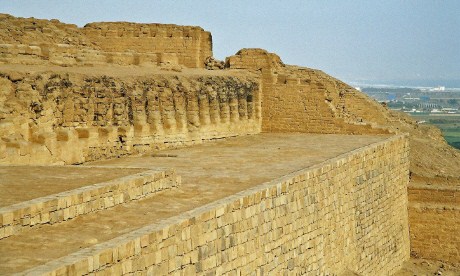
Escape the hordes at Machu Picchu and discover these alternative attractions in Peru – all just a day's journey from the capital city, Lima
Peru’s vast distances and oft-compromised transport links transform even fairly short-distance trips into journeys deserving of the independent-spirited traveller, historical treasures and humble homesteads rich in native character the rewards for perseverance and curiosity. Lima, jealous rival to tourist hubs of Cuzco and Arequipa and zealously clasping its own marvellous secrets, has long been (unfairly) ignored by the casual tourist.
Yet for those with a little more time, or perhaps dealing with a case of Inca overload, the coastline, mountains and jungle mere hours from the capital, offer respite and exciting alternatives from the stifling crowds and ponderous bus travel that await you along the Gringo Trail.
Only one thing brings visitors here – the valley’s white-water rafting opportunities are surpassed only by those in Cuzco and Arequipa.
Fed by glacial run-off high in the Andes, the Rio Cañete churns up and spits out those who choose to run its course, amid the steep barren slopes and vineyards of the area. For those wanting a challenge, head here between January and April, when waters run high and deep and the ride is all the more exciting.
It’s not all adrenaline-pumping activity, though. The town's proximity to Ica has fostered a wine-producing tradition and bodegas give visitors the chance to lend a foot in their labour, by treading the grapes the old-fashioned way.
A mere 40 minutes from the centre of Lima and once an important Inca ceremonial centre, this archaeological complex is unmissable as an excursion from the capital city. Though the grand adobe temples and palaces have fallen into disrepair – left as obelisks to a greater time amid forlorn sandy plains – they remain enduring monuments to Peru’s pre-Colombian heritage and will probably be the visitor’s first glimpse of the civilisations so inexorably etched into the Peruvian psyche.
From atop the Sun Temple, appreciate the scale of the site, a product of unbroken settlement for over 1,000 years before the arrival of the Spanish.
The clear air and sun-blushed skies of this beautiful mountain town draw a regular crowd of Limeños every weekend, its laid-back vibes matched by the allure of highland jungle just kilometres away.
Lying along the central route into the vast jungle of Amazonia, transport is plentiful and affordable, making a taste of the highland life in just a weekend from Lima possible. Generously rewarded with an unchanging climate of warm, sunny days, the opportunities to refresh a mind and body starved of inspiration are vast.
Whether it’s grappling with the dark silence of South America’s deepest cave, wandering among long-lost (and less crowded) Inca ruins or simply admiring the glossy prevalence of its gorgeous flora, you will leave replenished and with renewed respect for the country’s Andean traditions, no doubt sporting a healthy tan in the process.
As you clamber skyward, eyes open to the limitless horizon, the splendid isolation of this rocky plateau can both thrill and humble the willful camper. Soothing beneath an uncluttered night sky and bewilderingly eerie by day, the challenge of solo adventure is well-earned.
Marcahuasi’s greatest prize is its bizarre stone “figurines”, sculpted by the natural forces that sweep this mountain landscape, but whose perfect, silent form seems to have been conceived by celestial intervention.
Lose yourself among the statues, reassuring wardens of this unpeopled sanctum. Although, be warned, linger too long and you may just fall in love with such an uncomplicated and wild existence.
Austro-German colonies are gingerly forged here in the middle of sweltering cloud forest. Swiss-style buildings are juxtaposed alongside the sweet scents of mango plantations and lush, wildlife-rich surrounding jungles. The European features of a large immigrant population hailing from the central European hinterlands of Austria and Germany mark most profoundly the settlement of Oxapampa in the province of Chanchamayo, littered in the Swiss-style cottages of a land far-removed from the Peruvian landscape known to the South American traveller.
Within hours of Lima, rising and falling along the spine of the grandiose Andes mountain range, the string of villages here are priceless, living artifacts to a European cultural heritage that the Peruvian tourist board seems wont to bury.